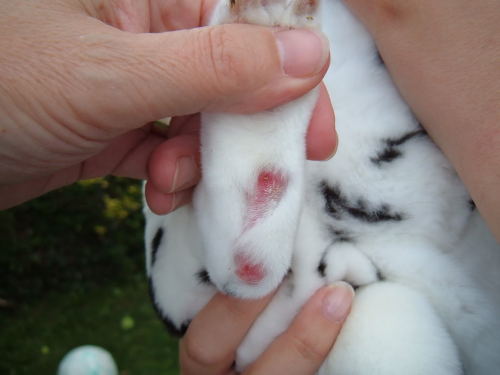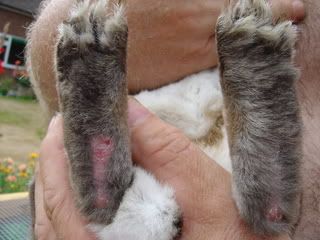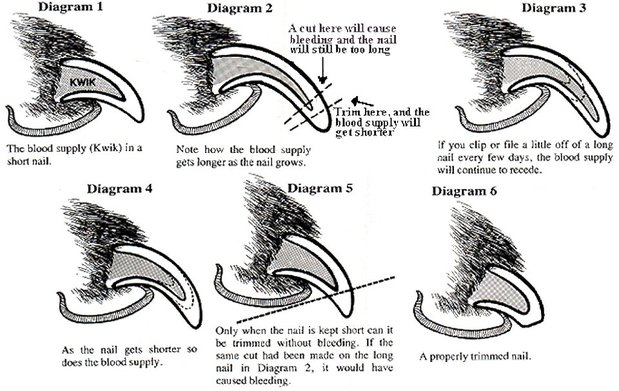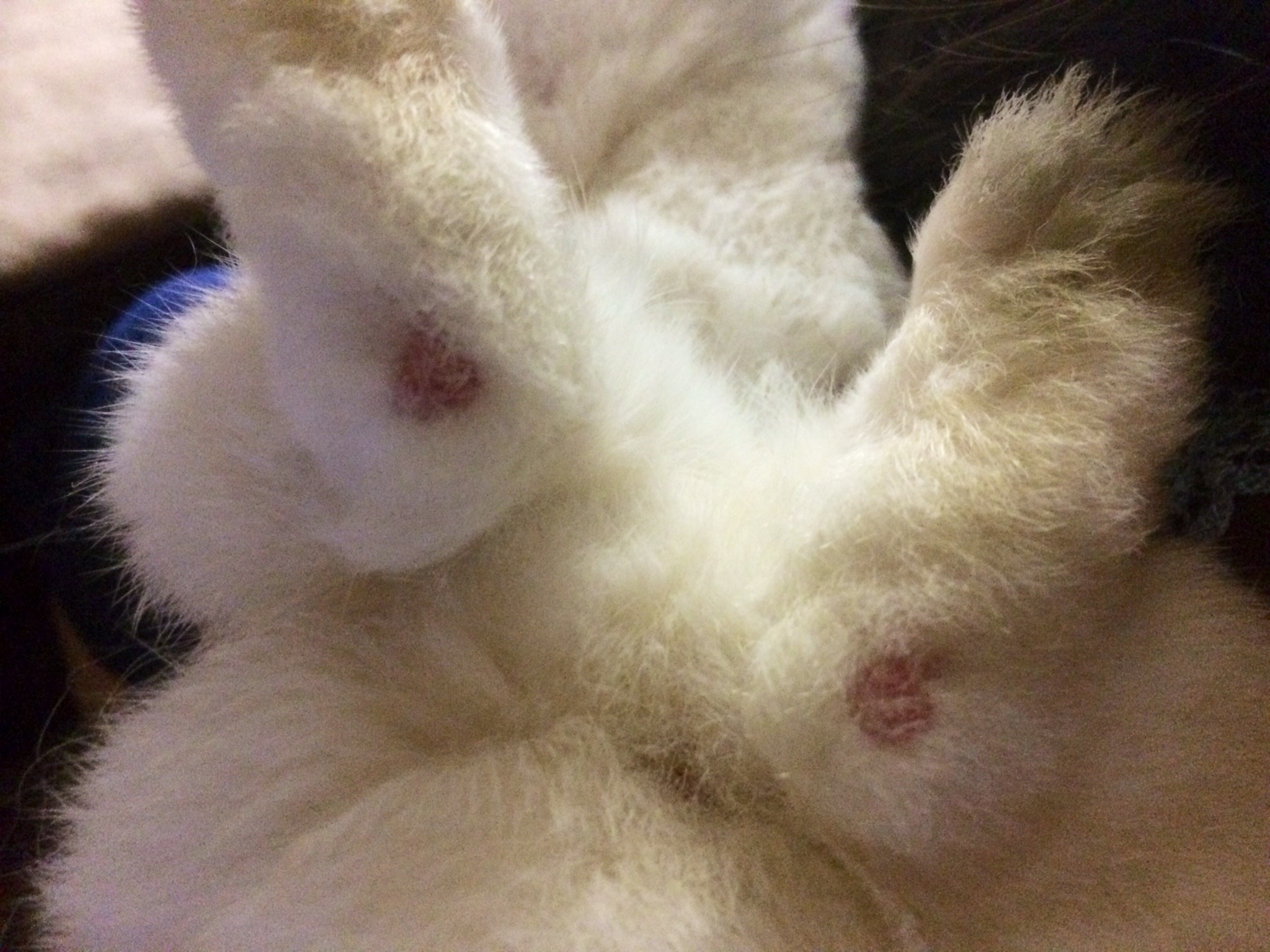Rex Rabbit Housing Requirements
PLEASE READ WITH CARE
Why Do Rex Rabbits Require “Special” Housing?
The breeds “mini” rex and “standard rex” were orignally bred for their fur. The fur is a special short dense structure that often feels like plush or velvet ( and was orignally a genetic mutation!). Today rexes make wonderful pets. They are an active, intelligent and curious breed that will live a decade with dedicated care.
Rexes need special housing because they are prone to a condition called ” Sore Hocks”. This special short fur makes it easy for the fur on the hock, the underside of the foot, to become “worn” away. As the fur subsides it leaves the skin vunerable to friction burns as the rabbit moves. These burns can progress into bleeding wounds and if left infected or open, can even progress to serious bone infections.
In A Nutshell Can You….
- Provide a hutch/ indoor house that is large enough and well padded?
- Frequently check the underside of the rabbits feet to check for signs of sore hocks?
- Make sure you have a vet that is rabbit savvy?
- Trim rabbit nails yourself or by a professional often?
- Provide plenty of toys and activities to do for your rabbit?
- Make sure that your rabbit has a friend if alone?
Below are images of rex rabbits with sore hocks.


To prevent this from occuring, there are a few preventative measures: ( Pictures of suitable set-ups are below)
Outdoor Housing
- Flooring. These rabbits CAN NOT be kept on concrete, plastic & wire flooring This type of flooring causes the rabbits foot to rest unnaturally and not flat causing the sores. Instead, consider wood, tile or lino , the more padded and less slippy the better.
- Bedding. Making the flooring as soft and as close to earth is recomended. These rabbits benefit from a bed of hay and shavings. They also benefit from soft padding on lino flooring such as carpet off-cuts. Bedding MUST be kept clean to prevent the feet from becoming wet and more prone to matting.
- The Hutch and run must be protected from the elements to prevent dampness.
- From what I’ve seen personally, a lot of rex rabbits are diggers. So it causes a problem when you don’t want your garden dug up or to be chasing a rabbit around the garden. An idea is to put the run on concrete but to add soil on the bottom. This way the rabbit’s feet are protected as well as your lovely lawn.

Reference 1
The Good
- Rabbit has access to the outdoor run at all times
- Edge of run is sat on covered concrete slabs preventing digging to escape
- Run has a wire cover ontop to protect from birds of prey or foxes jumping/breaking in
- Hutch is wooden based with a layer of hay on the bottom
- Run is sturdy, predator proof and of good size width and height
- Tunnels and plenty of enrichment to keep bunnies occupied
- Hutch has legs and is off the ground to prevent damp
- Plenty of wire mesh used to aid in ventilation and coolness
What Could Be Improved
- Unsure of hutch sizing but larger would be better, especially a two tier. Ideal size is 6ft x 2ft x 2ft
- Unsure if covered ontop but would be recommend against the elements
- Make sure the rabbit has a water bottle in the run area as well

Reference 2
The Good
- Two tier hutch giving the rabbit more room than a single
- The run has a base, this helps to stop escape of the rabbit and bark as well as a barrier to any wild rabbits that could spread disease
- Hutch and run looks sturdy, predator proof
- Run is covered by wire mesh to prevent birds of prey having a meal as well as a bunny escape
- Looks as if the run can be covered by tarpuline to protect against the elements
- Hutch is pushed up against the fence to make it more sturdy, less able to tip over
- The run has a base of bark chippings, good for rex feet as well as for digging!
- Rabbit has litter trays / beds to go into for different floor texture / pressures on feet
- Rabbit has two water bottles, in hutch and in run
- Plenty of toys and tunnels to play with!
- The hutch is made out of wood but with the amount of soft floor to wood ratio this is okay
What Could Be Improved
- Rabbit needs a rabbit friend!
- The hutch and run could be bigger. Reccommend size is 6ft x 2ft x 2ft for a hutch and at least a minimum of 6ft squared
- More access to hay
Other Ideas For Outdoor Housing



Indoor Housing
- Flooring. Plastic and short carpet are NOT RECOMMEND. Instead have a wooden indoor hutch rather than a plastic one. Use deep pile carpet which is more softer. Or use wooden / laminate / lino flooring with carpet offcuts/ rugs.
- Bedding. Woodshavings and hay in bulk can be a pain in the household. Why not use padding or rugs instead? Some people even use therapy memory foam (just becareful though if your rabbit is a chewer)
- The area MUST be clean and free of dampness

Reference 1
The Good
- Soft, deep padding on levels is great for bunny feet!
- Lots of levels which is great for exercise
- Can be locked up so rabbit has an area to retreat too when your out
- Tray at bottom contains an additional bed and is good to collect hay / shavings
- Lots of toys to keep busy!
What Needs Improving
- Rabbit needs a friend
- Could be larger
- Needs more opportunities for hay
- Could do with part of it covered for privacy / to reduce stress

Reference 2
The Good
- Padded lino with extra areas of softness such as the dog bed
- Lots of things to keep the rabbit busy!
- Good amount of hay
- Two litter trays is better then one
What Could Be Improved
- Rabbit needs a friend
- Not many pointers to be honest!
Other Indoor Housing



Health
By making sure you monitor your rabbits behaviour and health, you can prevent sore hocks.
Nail Trimming
By keeping your rabbits nails short, you are stopping the rabbit from putting all its weight onto its hock and therefore creating more pressure. Make sure your rabbits nails are trim at all times. If you are not confident at trimming claws make sure you know someone or get a professional such as a vets to do it for you.
Below is a diagram of how to cut a nail whilst avoiding the kwik, if caught the rabbit will bleed and loose trust. The more the nail is trimmed, the more the kwik recedes in time and the nail can be kept shorter.

Checking The Feet
The feet of the rex should be checked daily for any stages of soreness:

Good hocks look like these above. Plenty of fur growth around the whole foot. The feet are clean and the nails are trim.
Stage 1 – The fur on the hock may be beginning to recede and the skin is exposed – A small pink centre may be seen. At this point no action needs to be taken. But it is recommended that you take a look at your hosuing and make sure there is more padding.

Stage 2 – The pink circle becomes more darker or inflamed. At this point action must be taken before it gets worse. Seek your vet who may apply anti-inflammatory ointment / powder and may even bandage the foot up.

Stage 3- The area will continue to look inflammed and may begin to swell up, bleed or become full of puss. At this point the rabbit MUST seek veterinary attention.

I Hope This Article Has Hightlight Some Key Points In The Importance Of Housing For Rexes
The aim wasn’t to put you off, but to make sure you are educated in the responsiblity you may be taking on. After all, a rabbit may be in this situation becuase their previous owners did not do their home work.
Please consider adopting a rex from us, they make great, loving companions and will keep you entertained for hours!